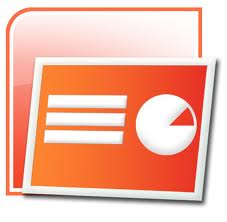Introduction to Biology
The first unit of biology is intended to give students a feel for the types of issues that will be covered in the course. Certain fundamental concepts that will reappear multiple times throughout the year will also be taught here. Depending on the course, this may also be the point that the scientific method is first taught and applied.
Introduction to Biology Lecture Powerpoint
 |
Purpose: This Powerpoint provides the structure and ordering of the unit. Break up the lecture into sections by adding activites, discussions, labs, and videos. This will allow the material within the unit to be taught in small, managable amounts, while giving students the opportunity to apply the knowledge in a variety of different ways.
Essential Concepts: Biology, characteristics of life, adaptation, response, regulation, growth, development, energy processing, organization, biosphere, ecosystem, community, phopulation, organism, cell, tissue, organelle, molecule, organization of life, scientific method, variables, experiment, observation, hypothesis, controlled experiment, control, independent variable, dependent variable, qualitative data, quantitative data, sample size, peer review, bias.
Introduction to Biology Lecture Notes Outline
Purpose: Taking efficient notes can be a big challenge for many students, especially when working from a Powerpoint lecture. This outline gives students a means to take notes that guides them toward important concepts and avoids the pitfalls of writing word-for-word or simply not taking notes at all. The outline is written as a series of questions, fill-in-the-blanks, or diagrams.
Essential Concepts: Biology, characteristics of life, adaptation, response, regulation, growth, development, energy processing, organization, biosphere, ecosystem, community, phopulation, organism, cell, tissue, organelle, molecule, organization of life, scientific method, variables, experiment, observation, hypothesis, controlled experiment, control, independent variable, dependent variable, qualitative data, quantitative data, sample size, peer review, bias.
Characteristics of Life Walkaround Lab Activity
Purpose: Students can begin to look for the characteristic signs of life by examining some of the specimens available in the biology classroom. Live animals are ideal if available (even insects or earthworms work well), but preserved specimens can still be used to show examples of order and adaptations.
Essential Concepts: Characteristics of life, adaptation, response, regulation, growth, development, energy processing, reproduction.
The Scientific Method and Spontaneous Generation Worksheet
Purpose: The scientific method is a concept that is covered in the beginning of nearly every science class taken by students in high school through college. This worksheet set takes the major steps of the scientific method (observation, hypothesis, experiment, conclusion) and has students apply them to the famous experiments involving spontaneous generation and photosynthesis.
Essential Concepts: Scientific method, experiment, observation, hypothesis, experiment, variable, control, independent variable, dependent variable
Data Analysis and Graphing Worksheet
Purpose: This worksheet set provides students with collected data series with a biology theme, including lynx and snowshoe hare populations, venomous snake bite death rates, and percent composition of the different chemical elements of the human body. Students will generate a different type of graph (line, bar, and pie) for each data set while reviewing the formatting rules and guidelines of writing a scientific graph.
Essential Concepts: Data collection, graphing, independent variable, dependent variable, x-axis, y-axis, graph formatting, line graphs, bar graphs, pie graphs.
Mythbusters "Who Gets Wetter?" Video Worksheet
Purpose: The main premise behind the scientific method is that any phenomenon in nature can be explained given enough research, observation, and experimentation. This episode of Mythbusters provides a great example of the scientific method in action to answer the question of whether one gets wetter by walking or running through a rainstorm.
Essential Concepts: Scientific method, experimental design, experimental group, control group, independent variable, dependent variable, sample size, controlled experiment, modeled experiment, natural experiment.
Introduction to Biology Study Guide
Purpose: This is a simple study guide for students to complete at the end of the introduction to environmental science unit. The first part of the study guide has all the major vocabulary words for the unit in sequential order according to the lecture Powerpoint. The second part of the study guide has sample short answer questions to give students practice in applying the concepts in a written exam.
Essential Concepts: Biology, characteristics of life, adaptation, response, regulation, growth, development, energy processing, organization, biosphere, ecosystem, community, phopulation, organism, cell, tissue, organelle, molecule, organization of life, scientific method, variables, experiment, observation, hypothesis, controlled experiment, control, independent variable, dependent variable, qualitative data, quantitative data, sample size, peer review, bias.
.
